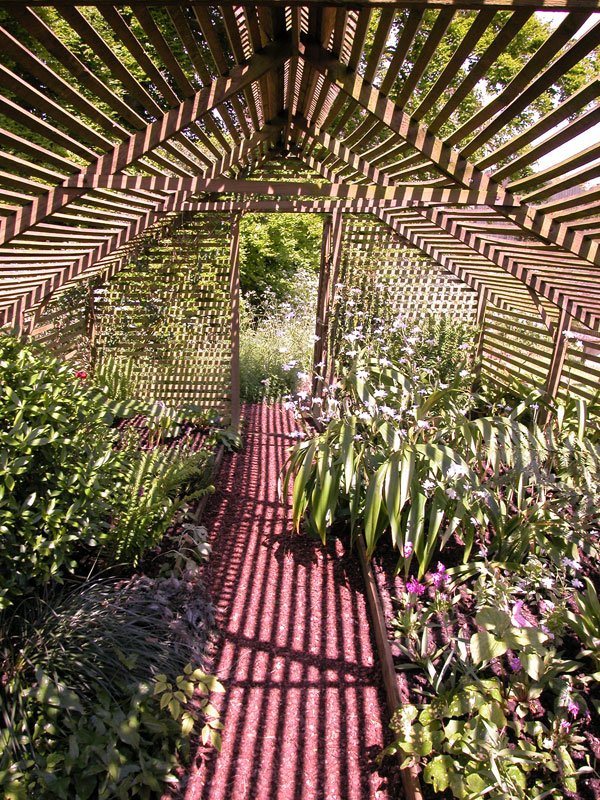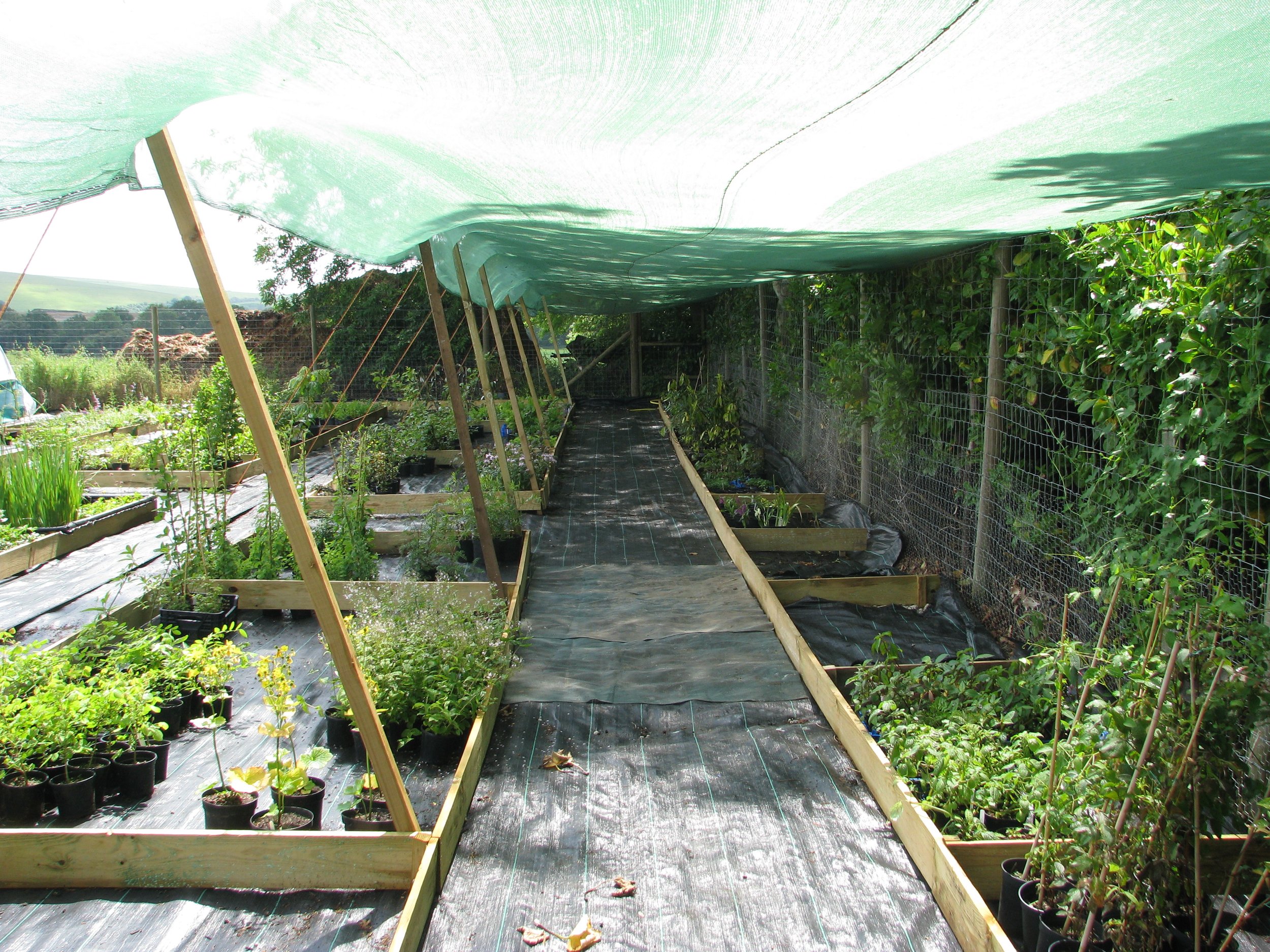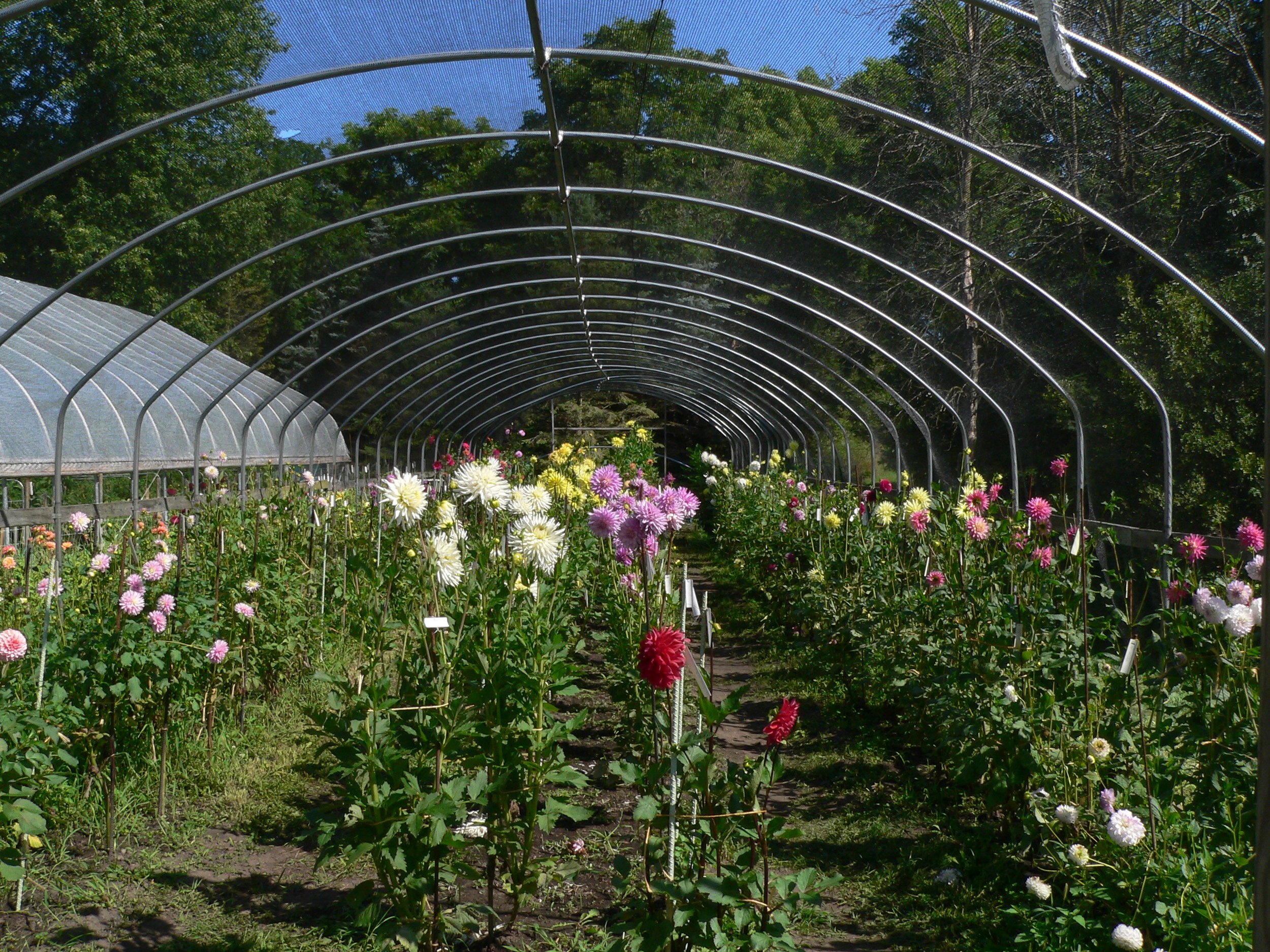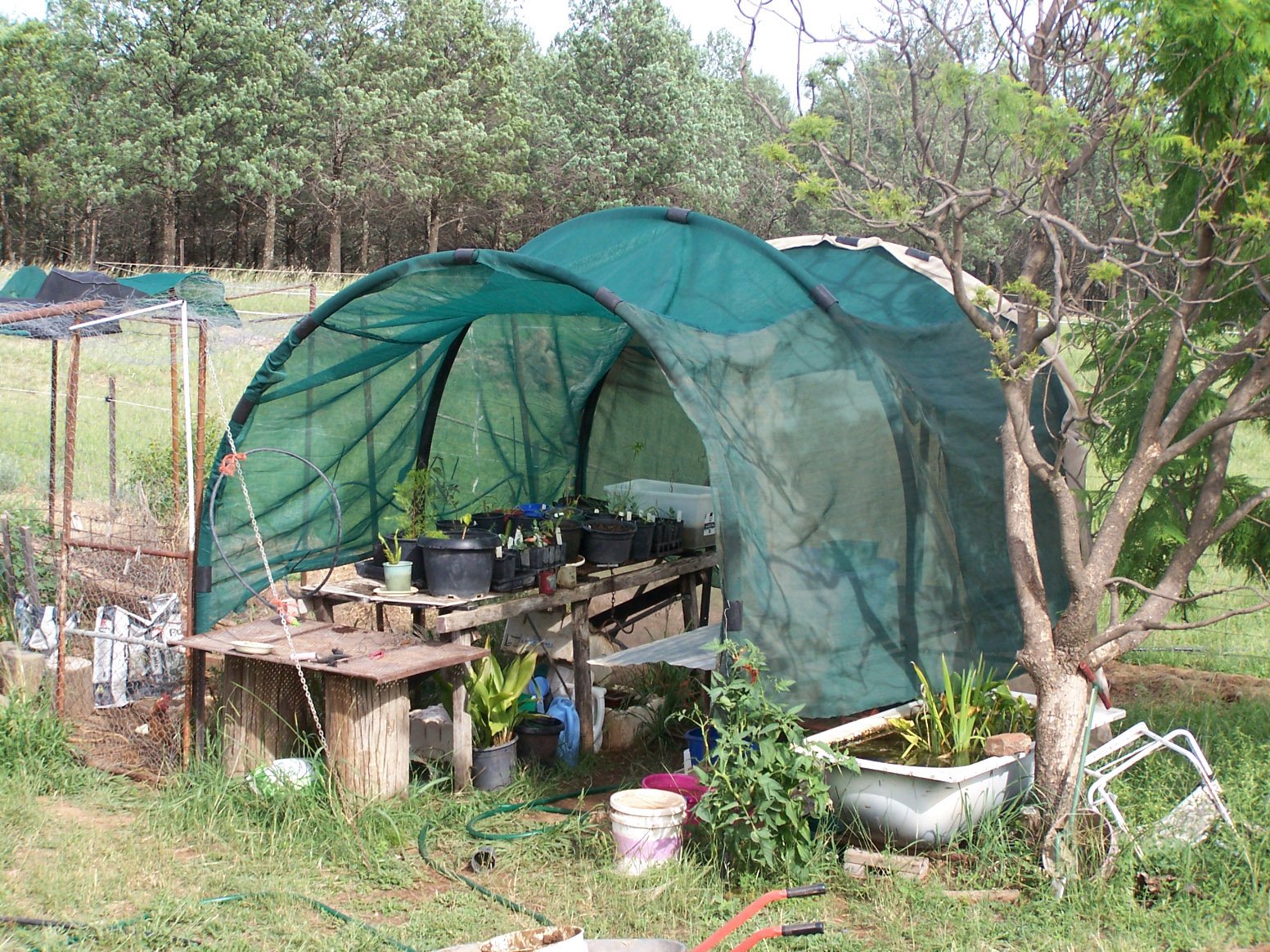DIY Simple Shade House
Ever since I started collecting houseplants, I’ve been putting them outside in the spring and summer so they can really take off. I’m in US hardiness zone 8a (learn more about those here) where it gets quite warm and humid between April and October. Tropical plants seem to thrive in these conditions— as long as they don’t get too much sun and heat. Think about it: many houseplants are native to dense, tropical jungles where they don’t get much direct sun.
That’s where the concept of a shade house comes in! Shade houses provide (what else?) shade to delicate plants while still allowing some light to penetrate. They’re also open to the elements, and aren’t climate controlled like a greenhouse might be. Shade houses are especially popular with gardeners in hot climates, like Australia and the southern United States. And they’re great for keeping all sorts of plants shaded, from tender starter seedlings to prize orchids.
I’ve looked at a lot of different shade houses for inspiration, and there are so many varieties out there! Ramshackle hoop houses, lean-to style structures, freestanding metal cages, ornate wooden lath houses… but because I’m a broke millennial with a rent house and not a fancy botanical garden, my options are somewhat limited. I needed a solution that is made from readily available parts, easy to assemble and disassemble, and most importantly, cheap!
I ended up settling on 1/2” PVC pipe for my structure, and bought enough 5-foot long pipes to construct a 5x5x6” cube (6 feet tall to allow myself the slightest bit of headroom). Using 3-way elbows to join the pipes at the corners, and couplings to extend the cube’s height to 6 feet, assembly only took 45 minutes or so. I just used a rubber mallet to secure the connections— no glue, so when I’m ready to disassemble the structure, it should be easy.
The longest and hardest part was wrangling the hardware mesh and shade cloth! I ended up only using half the hardware cloth I bought because it was fairly tricksy to work with. Using zip ties, I fastened the wire hardware cloth to one side of the shade house, and then affixed the shade cloth in the same way. I had just enough shade cloth to cover the top and the southern and eastern sides, but that should work just fine for my purposes. A 6-foot tall plastic shelving unit I already owned forms the north side of the shade house, which will provide some extra room for plants.
Check out the quick video overview I made about the project below!
I’m still working on a longer video with a detailed breakdown of the materials and my process, but in the meantime, here are some handy links to all the supplies I used:
Check back soon for more!





